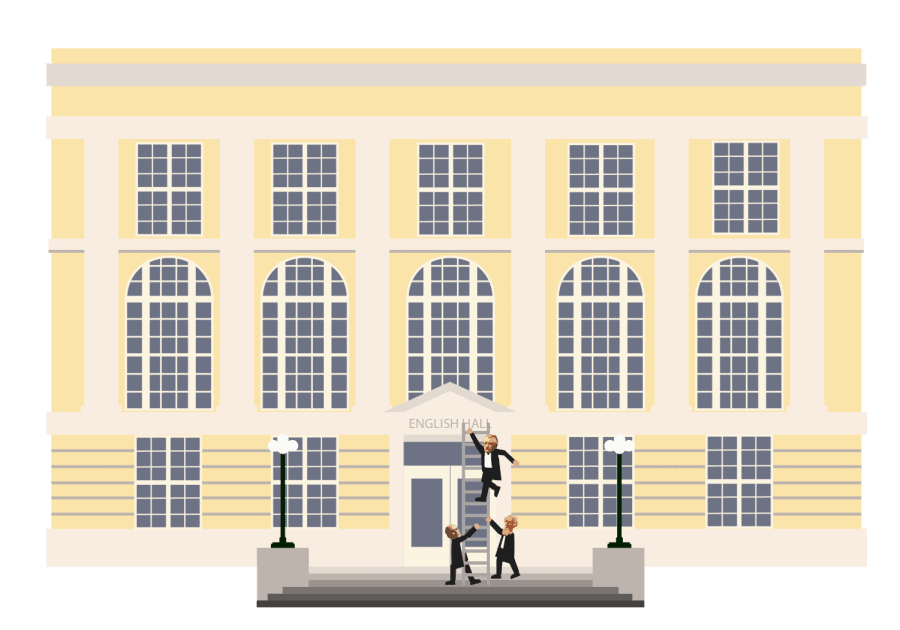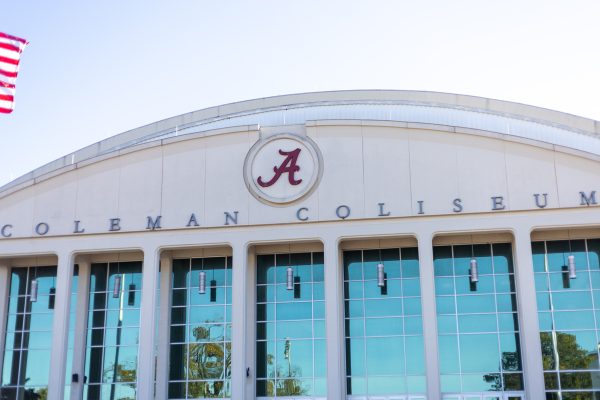Opinion: Take Morgan off the English building
August 21, 2020
George Floyd’s killing and the wave of national reflection – along with the years-long work from UA student activists and faculty– has brought changes to campus. Those changes have included the removal of three confederate plaques, as well as the consideration of name changes to buildings that have honored white supremacy. Most recently, Nott Hall has been renamed to Honors Hall. Morgan Hall, the building where I work and learn most often on this campus, should also be renamed.
John Tyler Morgan is a name that dishonors the English building and the education that takes place within it. John Tyler Morgan used English skills that are taught in classes today – rhetorical analysis, critical thinking and reading, composition of clear and steady sentences – for the advancement of white supremacy. Morgan was a former Ku Klux Klan leader, an architect of Jim Crow law, an enslaver, a Confederate general, an imperialist and expansionist and one of many engineers of systematic racism. His words enacted the destruction, death, segregation, discrimination, looting, belittling and pulverization of Black bodies and many other non-white bodies.
It is not just an official name, but a name that’s uttered in the same breath as “Southern Horrors.” a name that, according to one scholar, contributed to the “Genesis of Jim Crow Ideology.” And it is a name that is used every day in the world of the University: “I work in Morgan,” “My class is in Morgan,” “Meet you on the first floor bench in Morgan,” “The event is in Morgan 301.” His name—Morgan—is stamped onto the psyche of the campus.
The building sits above Marrs Spring right off the southeast corner of the Quad, with its cemented steps and giant, marvelous magnolia trees in front of it. In the early 1900s it was the site of a two-story kitchen used to prepare food for the Gorgas House and Steward Hall. Enslaved people did this work, along with hauling buckets of water up from Marrs Spring to the building. In 2015, the University removed a portrait of John Tyler Morgan from the main hallway, and in the 2019-2020 academic year, it removed a plaque commemorating him.
But the name remains.
I’m asking something tired, but I’ll ask anyway. Change the name. Change the name of The University of Alabama’s English building. I can only guess Morgan’s name has been ingrained into the building because he “served” the state of Alabama as a six-time senator and a soldier in the Civil War, a war where he fought for the right to own humans as property. Why does the name remain? Money? Heritage? The remembrance of history? An honor that denudes and neglects shameful facts?
John T. Morgan was not a good human being. One only needs to read his Wikipedia page to understand that fact.
But if you need more reasons, I can go on. In national magazines, on the congress floor and other texts, Morgan tried to block Black voting rights. He feared Black-controlled governmental positions and tried to create obstacles to prevent that from happening. He could not imagine an Alabama, or an America for that matter, with Black people in the seats of power and decision making. Morgan argued for literacy tests at voting booths, tried to block federal security to allow voting, criticized the fourteenth and fifteenth amendments and explicitly wrote that “We the People” in the U.S. Constitution was meant to reference only white people.
Is that enough? There is more. Morgan argued that Black people had “…been a conspicuous and dangerous element in this country for a century, that there is a natural incongruity, ‘an irresponsible conflict,’ between the races that nothing will cure, except their final separation.” He promoted the Butler Emigration bill of 1890. The bill would’ve used taxpayer money to emigrate most of the 8 million Black Americans who lived in the United States at the time to Africa.
The bill never passed, but time and time again, Morgan proposed racist ideas and brought them to the U.S. congressional floor, giving momentum to the idea that Black people are an inferior race. Also in 1890, Morgan composed “The Race Question in the United States.” In it he makes the argument for the separation of races. He notes, falsely, how different people are according to their race.
“Amongst these differences, the color of the skin, while it distinguishes the races unmistakably, is the least important,” he states. “The mental differences and differing traits, including the faculty of governing, forecast, enterprise, and the wide field of achievement in the arts and sciences, are accurately measured by the contrast of the civilization of the United States, with the barbarism of Central Africa.”
In this document, Morgan also defends slavery, calling it more “universal than marriage and more permanent than liberty.”
To understand how this rhetoric has evolved over the years, look at Senator Tom Cotton’s views on teaching the history of slavery with the thoroughly researched 1619 project. Senator Cotton is calls slavery a “necessary evil.” I am not saying that if buildings named after people like Morgan did not exist, Senator Cotton would have not said this, but the removal of those names (the statues, the commemorations, the tax-funded memories) would cause those ideas to lose strength, circulation and above all, honor – even if just a tiny amount.
Morgan’s ideas took hold as time went on and outlived him by the time of his death in 1907 with the dawn of the Jim Crow era. White southerners created laws, state institutions and codes that separated and disenfranchised Black people for decades to come. Meaningful voting protections for Black people would not be instituted until the mid-20th century. White supremacy became a dogma that seeps into all aspects of American life to this day. Morgan, from his spoils of power and position, helped make all of this prejudice a reality. To have his name on the building is to accept that discriminatory power and its harmful ideas.
There is an argument in support of keeping Morgan’s name in order to maintain history, to reflect and remember where and how The University of Alabama emerged. I argue we can remember that history differently. The placement of Morgan’s name on that building reinforces the publicity of his ideas. What does it mean to honor those ideas? In my view, naming a building after a person honors that person. Does this University really want to honor a man like John Tyler Morgan?
In the amplification of Morgan’s name, we have also forgotten and erased others. I would not mind knowing the names of the cooks who worked in the building before it was an English institution, the people who served the privileged folks like Morgan. Those people seem like better choices for building names.
John Tyler Morgan held a position of honor and power. He will not be erased from history if his name is erased from the English building. What will and should change is what the University honors and displays to its community.
If part of the University’s mission is to “advance the intellectual and social condition of the people of the state,” then changing the English building’s name would be an example of such an advancement. As someone who came here from out of state, the name of my building did not stop me from attending the University, but it did sink a part of my joy. I wish to remove this negative name, this name that stands for everything I hope not to be, everything I hope not to teach or learn within the English building. It is time for the name to change. Addressing what The University of Alabama honors, what it displays in its brochures and websites, is one extremely small step toward addressing institutional racism. To reach the ideals of higher education, the University should thoughtfully dismantle Morgan’s name and everything that name stood for.










